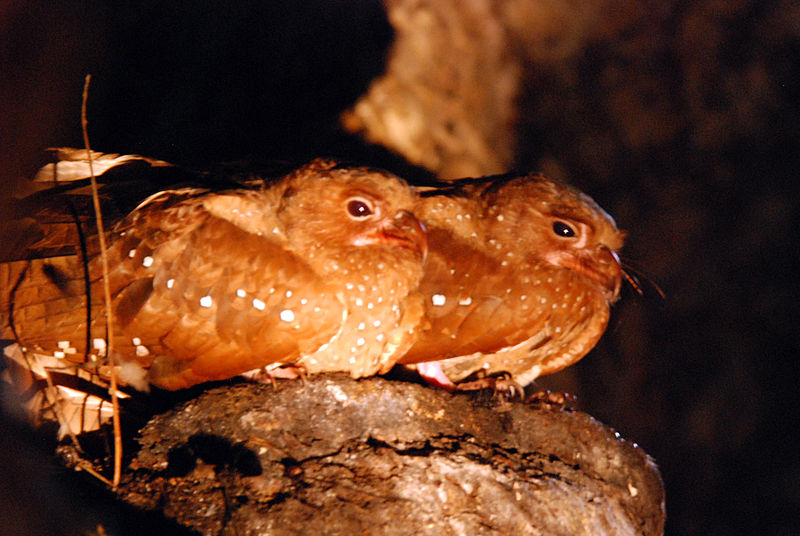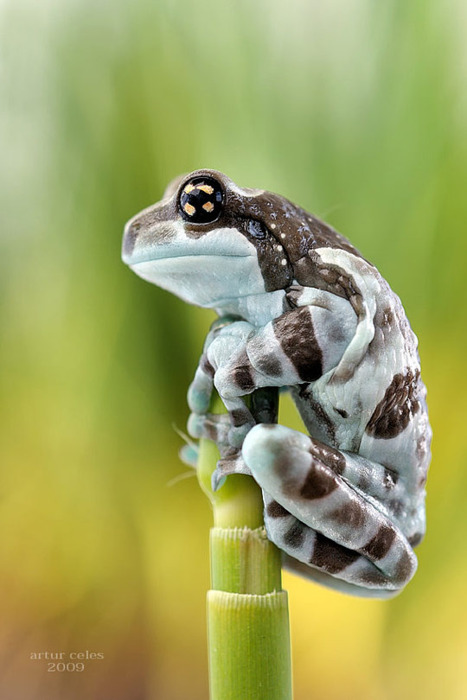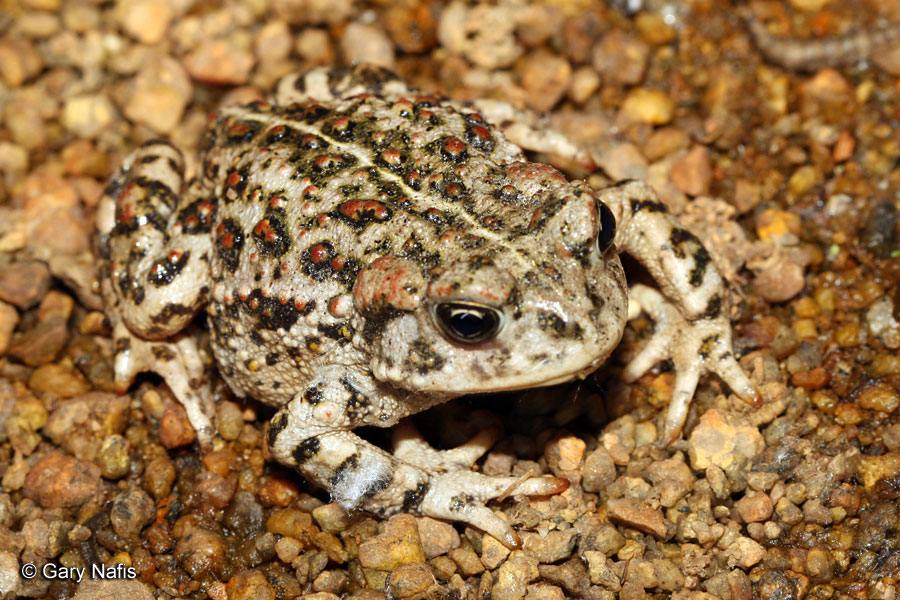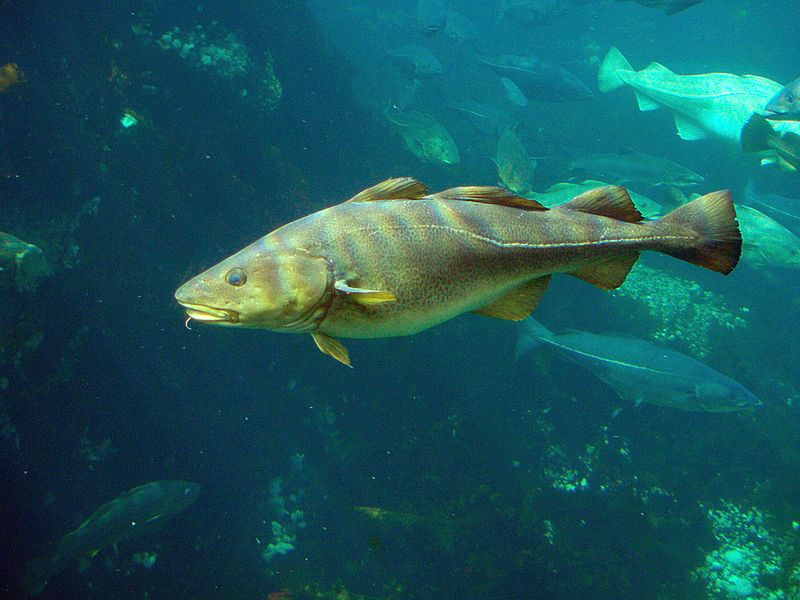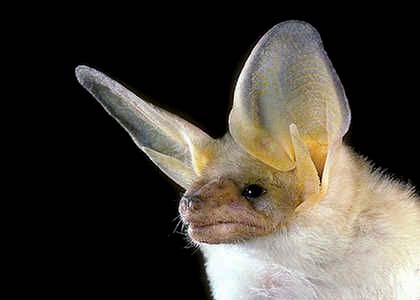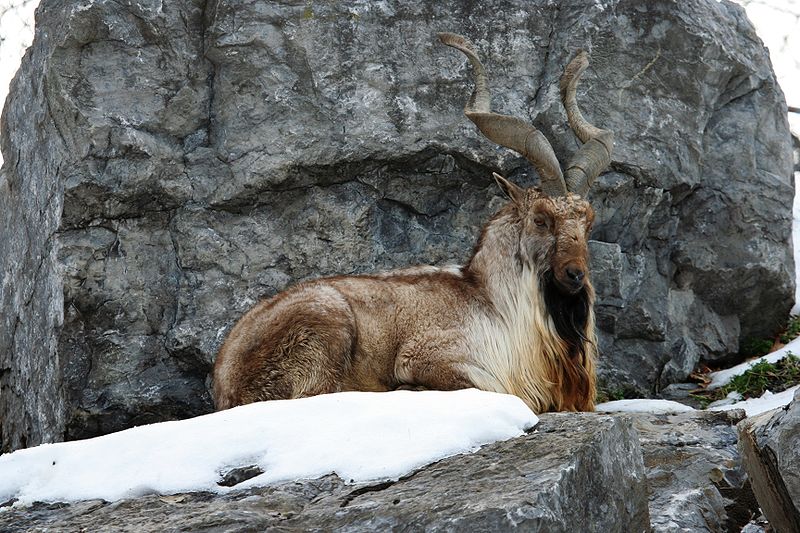
Welcome to the Wednesday edition of Wild Facts. I can’t believe it is already the middle of the week. As they say, time flies when you are having fun. They also say that it is always good practice to learn about goats on a Wednesday. Okay, so maybe they don’t say that but they should. I am sure you have clued in that we are going to be talking about a wild goat species called the Markhor. These furry goats are native to the mountains of western and central Asia.
You really can’t miss the Markhor since they are one unique looking goat. Besides the long furry coat the Markhor also has unusual horns. The spiraled horns of the male can grow as long as 1.5 m (4.9′). Meanwhile the horns of the female are not nearly as impressive as they typically grow to about 50 cm (1.9′). Personally, I would have been impressed with the 2 foot horns on the female if it weren’t for the 5 foot long male horns.
Typically these goats can be found on the mountains ranging anywhere from 600 -3600 m above sea level. In case anyone is unsure just how high that is I will try to clear it up for you. That is really really high! For my non-metric friends to the south, it is just under 12 000 feet. So what the heck to these animals eat all the way up there? Well, like most goats they graze on grasses and shrubs. They just happen to be a very important part of the ecosystem since they are constantly transferring the seeds around the mountain. You would think that a life on the edges of cliffs would be pretty safe. Unfortunately this is not the case as the Markhor still have several predators including wolves, lynx and snowy leopards. Is nowhere safe anymore?
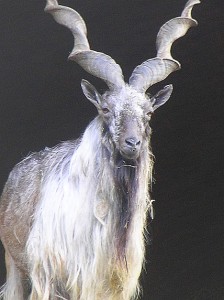
It looks like I am going to end today’s Wild Fact on a bad note. I know, I am such a party pooper. According to population estimates there are only about 2500 of these animals found throughout remote areas of the mountains in Asia. This is probably why they are listed as an endangered species. So what caused this population decline? Now I don’t want to shock you but it is habitat destruction through deforestation that is having such a massive impact on these majestic animals. I know, I was surprised to hear that habitat loss was the reason. That almost never happens (I know sarcasm can be difficult to pick up in writing so please note that I was being very sarcastic while writing this).
That does it for the Markhor. See all of you tomorrow.


